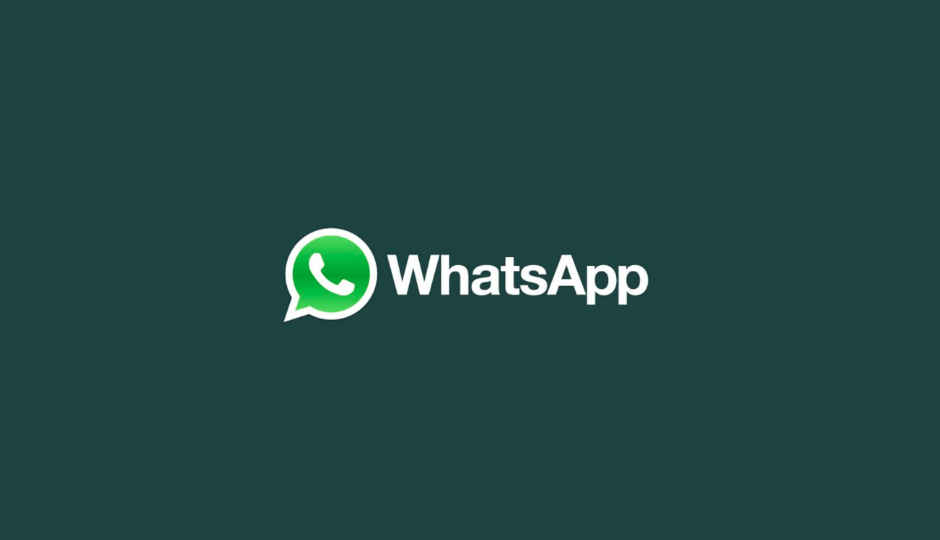 Highlights: WhatsApp launches tip line to fight misinformation during elections. The tip line will work in Hindi, English, Telugu, Bengali and Malayalam. Users can add +91-9643-000-888 on WhatsApp to verify messages. In a bid to fight misinformation and Fake News on the platform, WhatsApp has launched a new tip line in collaboration with PROTO, an India-based media skilling startup. The tip line number +91-9643-000-888 can be added by WhatsApp users and can be used to verify text messages, videos and photos circulating on the platform with regards to the 2019 Lok Sabha elections. The election period is a crucial time in a country and political parties circulate propaganda through various means on popular messaging services like WhatsApp. Users may receive false news and forwarded messages that are intended to harm campaigns or malign contenders. To make it easier for WhatsApp users to sift through misinformation, the platform has partnered with PROTO for a new tip line. PROTO will use texts, images and videos reported by users on the tip line to create a database of rumors and study misinformation during elections for Checkpoint - a research project commissioned and technically assisted by WhatsApp. ”When a WhatsApp user shares a suspicious message with the tipline, PROTO’s verification center will seek to respond and inform the user if the claim made in message shared is verified or not. The response will indicate if information is classified as true, false, misleading, disputed or out of scope and include any other related information that is available,” WhatsApp writes in a blog post. The WhatsApp election tip line service will cover four regional languages including Hindi, Telugu, Bengali and Malayalam, other than English. “PROTO will also encourage grassroots organizations to submit rumors circulating across different regions in India during the election period,” said the Facebook-owned platform. Other partners making this tip line possible include - Dig Deeper Media and Meedan. The organisations have previously worked on misinformation-related projects around the world, and will help PROTO develop the verification and research frameworks for India. “Meedan has developed the technology to support the verification of rumors and will maintain the database of rumors that have been processed. To do so, they have expanded their Check platform (developed for recent elections in Mexico and France) and integrated it with the WhatsApp Business API, to receive and respond to messages at scale,” said the company. After the completeion of the process, PROTO will submit learnings to the International Center for Journalists to help other organizations learn from the design and operations of this project. WhatsApp has been under intense scrutiny in India for being a source of fake news and false claims. The platform has been facing the ire of the government since last year, when a bunch of fake messages circulating on the platform inspired mob lynchings across the country. Following the incident, the platform took several steps to fight misinformation. The Forwarded Label was introduced on WhatsApp soon after and the company also announced a research award to learn more about how fake news spreads in India. The company even introduced suspicious link detection to help users detect sent and received suspicious links in WhatsApp.
Highlights: WhatsApp launches tip line to fight misinformation during elections. The tip line will work in Hindi, English, Telugu, Bengali and Malayalam. Users can add +91-9643-000-888 on WhatsApp to verify messages. In a bid to fight misinformation and Fake News on the platform, WhatsApp has launched a new tip line in collaboration with PROTO, an India-based media skilling startup. The tip line number +91-9643-000-888 can be added by WhatsApp users and can be used to verify text messages, videos and photos circulating on the platform with regards to the 2019 Lok Sabha elections. The election period is a crucial time in a country and political parties circulate propaganda through various means on popular messaging services like WhatsApp. Users may receive false news and forwarded messages that are intended to harm campaigns or malign contenders. To make it easier for WhatsApp users to sift through misinformation, the platform has partnered with PROTO for a new tip line. PROTO will use texts, images and videos reported by users on the tip line to create a database of rumors and study misinformation during elections for Checkpoint - a research project commissioned and technically assisted by WhatsApp. ”When a WhatsApp user shares a suspicious message with the tipline, PROTO’s verification center will seek to respond and inform the user if the claim made in message shared is verified or not. The response will indicate if information is classified as true, false, misleading, disputed or out of scope and include any other related information that is available,” WhatsApp writes in a blog post. The WhatsApp election tip line service will cover four regional languages including Hindi, Telugu, Bengali and Malayalam, other than English. “PROTO will also encourage grassroots organizations to submit rumors circulating across different regions in India during the election period,” said the Facebook-owned platform. Other partners making this tip line possible include - Dig Deeper Media and Meedan. The organisations have previously worked on misinformation-related projects around the world, and will help PROTO develop the verification and research frameworks for India. “Meedan has developed the technology to support the verification of rumors and will maintain the database of rumors that have been processed. To do so, they have expanded their Check platform (developed for recent elections in Mexico and France) and integrated it with the WhatsApp Business API, to receive and respond to messages at scale,” said the company. After the completeion of the process, PROTO will submit learnings to the International Center for Journalists to help other organizations learn from the design and operations of this project. WhatsApp has been under intense scrutiny in India for being a source of fake news and false claims. The platform has been facing the ire of the government since last year, when a bunch of fake messages circulating on the platform inspired mob lynchings across the country. Following the incident, the platform took several steps to fight misinformation. The Forwarded Label was introduced on WhatsApp soon after and the company also announced a research award to learn more about how fake news spreads in India. The company even introduced suspicious link detection to help users detect sent and received suspicious links in WhatsApp.from Latest Technology News https://ift.tt/2VdRIGb
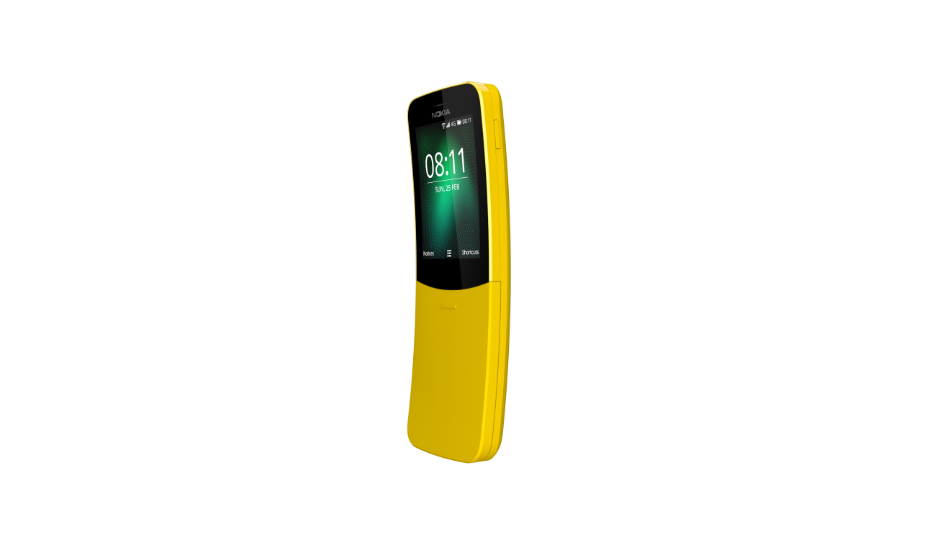 Highlights: HMD Global announces WhatsApp support for Nokia 8110. The Nokia 8110 aka Banana Phone was launched in India last year. The app can be downloaded from KaiOS app store. Last year, Juho Sarvikas, Chief Product Officer at HMD Global, hinted that the Nokia 8110 aka the Banana Phone will get WhatsApp support. Few months later, the company has now announced that users can use the instant messaging app on the phone. The Finnish giant also said that India is the first country to get this support. Those who own the phone can download it from the app store in the device. “We’re happy that our fans in India will get WhatsApp on Nokia 8110 first anywhere in the world. The Nokia 8110 is a phone for ‘the originals’ and I hope along with adding to the style quotient, this new addition of WhatsApp to the already existing bouquet of apps on Nokia 8110 will make it the ideal choice for our fans,” Ajey Mehta, Vice President and Country Head – India, HMD Global, said in a statement. HMD Global had launched the 4G-enabled Nokia 8110 in October in India. The smart-feature phone was first introduced at MWC 2018 but Indians had to wait for a few months to relive the sense of nostalgia. The ‘banana phone’ got famous after it was used in the first Matrix movie. The phone comes with 4G support and users will be able to use it as a Wi-Fi hotspot. Powered by KaiOS, the devices ships with Google Assistant, Google Maps and Google Search, along with Facebook and Twitter. When it comes to the specifications, the Nokia 8110 has a 1.1Ghz dual-core Qualcomm 205 mobile processor under the hood. It has 512MB of RAM, and 4GB of internal storage with an option to expand it via a microSD slot. On the back is a 2MP camera, and the phone has a 1,500mAh battery. At the launch event in India, HMD Global claimed that the Banana phone can last up to 25 hours on standby and deliver a talk time of 9.32 hours on a 4G VoLTE connection. The Nokia 8110 4G is available in Black and Banana Yellow colours across top mobile retailers in India, and online on Nokia.com, Amazon and Flipkart, at a recommended best buy price of Rs 4,999. Related Read: MWC 2019: Google Assistant comes to Android Messages, brings voice typing, Actions to KaiOS running feature phones
Highlights: HMD Global announces WhatsApp support for Nokia 8110. The Nokia 8110 aka Banana Phone was launched in India last year. The app can be downloaded from KaiOS app store. Last year, Juho Sarvikas, Chief Product Officer at HMD Global, hinted that the Nokia 8110 aka the Banana Phone will get WhatsApp support. Few months later, the company has now announced that users can use the instant messaging app on the phone. The Finnish giant also said that India is the first country to get this support. Those who own the phone can download it from the app store in the device. “We’re happy that our fans in India will get WhatsApp on Nokia 8110 first anywhere in the world. The Nokia 8110 is a phone for ‘the originals’ and I hope along with adding to the style quotient, this new addition of WhatsApp to the already existing bouquet of apps on Nokia 8110 will make it the ideal choice for our fans,” Ajey Mehta, Vice President and Country Head – India, HMD Global, said in a statement. HMD Global had launched the 4G-enabled Nokia 8110 in October in India. The smart-feature phone was first introduced at MWC 2018 but Indians had to wait for a few months to relive the sense of nostalgia. The ‘banana phone’ got famous after it was used in the first Matrix movie. The phone comes with 4G support and users will be able to use it as a Wi-Fi hotspot. Powered by KaiOS, the devices ships with Google Assistant, Google Maps and Google Search, along with Facebook and Twitter. When it comes to the specifications, the Nokia 8110 has a 1.1Ghz dual-core Qualcomm 205 mobile processor under the hood. It has 512MB of RAM, and 4GB of internal storage with an option to expand it via a microSD slot. On the back is a 2MP camera, and the phone has a 1,500mAh battery. At the launch event in India, HMD Global claimed that the Banana phone can last up to 25 hours on standby and deliver a talk time of 9.32 hours on a 4G VoLTE connection. The Nokia 8110 4G is available in Black and Banana Yellow colours across top mobile retailers in India, and online on Nokia.com, Amazon and Flipkart, at a recommended best buy price of Rs 4,999. Related Read: MWC 2019: Google Assistant comes to Android Messages, brings voice typing, Actions to KaiOS running feature phones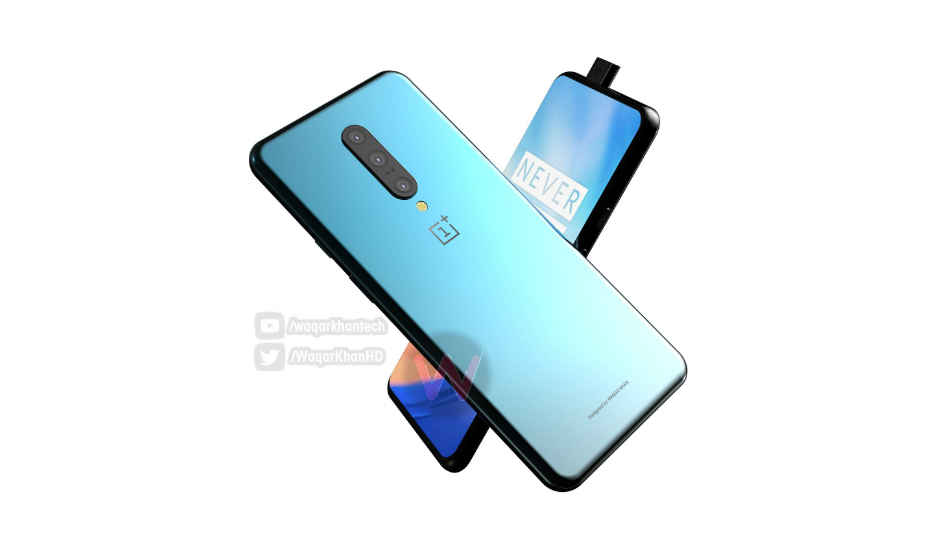 Highlights: Alleged OnePlus 7 shown off in new a video renders on YouTube. The phone is shown off with a pop-up front camera setup and triple rear cameras. The video render seems to have been based on the previous reports and renders of the phone. OnePlus is working on a 5G smartphone that could be completely different from the company’s existing lineup. However, its next flagship is most likely to be named OnePlus 7, which, if the company follows its regular handset release schedule, is speculated to be launched in just over a month. The company’s upcoming device has been leaked multiple times, mostly in listings and case renders. Now, YouTuber Waqar Khan has posted a high quality render video of a phone, claiming that it is the alleged OnePlus 7. There are also some images of the handset and from the looks of it, the video and photo render seem to be based on the existing leaks and rumours of the phone. Breaking down the video and images, the OnePlus 7 is showcased with the same design as its predecessor with curved edges but features a notch-less display. This is in line with the previous rumours, which claim that OnePlus would employ a pop-up camera on its next flagship handset to increase the display area, which would move the single front camera into the pop-up module. Additionally, the device is shown with an in-display fingerprint sensor and a vertically stacked triple rear-camera setup. A retailer listing of the phone tipped at a 48MP + 20MP + 16MP sensor setup on the OnePlus 7. Moving further, the video shows the OnePlus 7 with a USB Type-C port on the bottom, along with a single speaker grill and still without a headphone jack. The alert slider and power buttons are seen on the right, while the volume rockers are placed on the device’s left edge. The handset is also shown off in various colour options like purple, blue and black. While there’s no mention of the phone’s specs, it is expected to be powered by the Snapdragon 855 platform and feature up to 12GB RAM. Its front camera could have a 16MP sensor and it might offer up to 256GB of storage and battery capacity of 4000 mAh that supports 44W Dash Charging. Related Reads: OnePlus 7 to come in three gradient colour options: Report OnePlus 7 leaked case renders suggest pop-up front shooter and triple rear cameras
Highlights: Alleged OnePlus 7 shown off in new a video renders on YouTube. The phone is shown off with a pop-up front camera setup and triple rear cameras. The video render seems to have been based on the previous reports and renders of the phone. OnePlus is working on a 5G smartphone that could be completely different from the company’s existing lineup. However, its next flagship is most likely to be named OnePlus 7, which, if the company follows its regular handset release schedule, is speculated to be launched in just over a month. The company’s upcoming device has been leaked multiple times, mostly in listings and case renders. Now, YouTuber Waqar Khan has posted a high quality render video of a phone, claiming that it is the alleged OnePlus 7. There are also some images of the handset and from the looks of it, the video and photo render seem to be based on the existing leaks and rumours of the phone. Breaking down the video and images, the OnePlus 7 is showcased with the same design as its predecessor with curved edges but features a notch-less display. This is in line with the previous rumours, which claim that OnePlus would employ a pop-up camera on its next flagship handset to increase the display area, which would move the single front camera into the pop-up module. Additionally, the device is shown with an in-display fingerprint sensor and a vertically stacked triple rear-camera setup. A retailer listing of the phone tipped at a 48MP + 20MP + 16MP sensor setup on the OnePlus 7. Moving further, the video shows the OnePlus 7 with a USB Type-C port on the bottom, along with a single speaker grill and still without a headphone jack. The alert slider and power buttons are seen on the right, while the volume rockers are placed on the device’s left edge. The handset is also shown off in various colour options like purple, blue and black. While there’s no mention of the phone’s specs, it is expected to be powered by the Snapdragon 855 platform and feature up to 12GB RAM. Its front camera could have a 16MP sensor and it might offer up to 256GB of storage and battery capacity of 4000 mAh that supports 44W Dash Charging. Related Reads: OnePlus 7 to come in three gradient colour options: Report OnePlus 7 leaked case renders suggest pop-up front shooter and triple rear cameras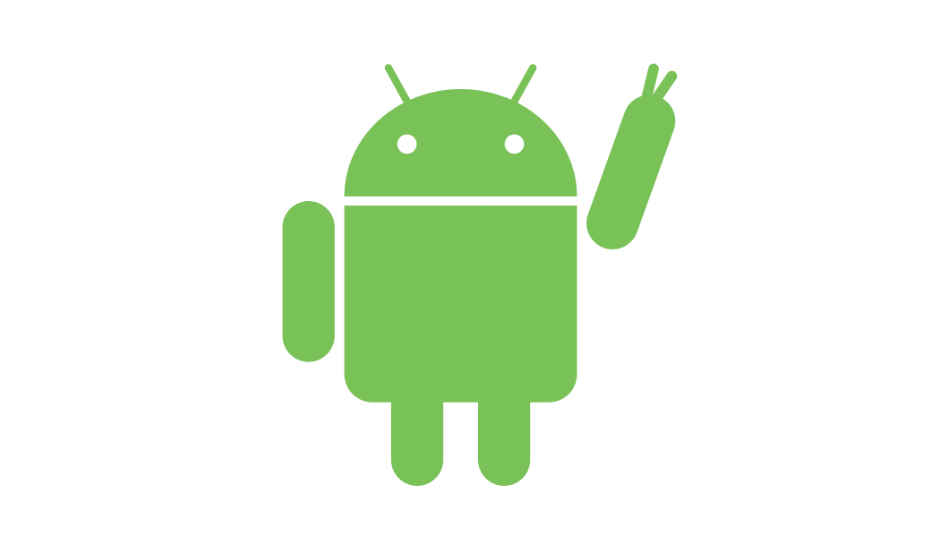 Highlights: Google says the health of the Android ecosystem improved compared to last year. The PHA install rates from Google Play increased from 0.02% in 2017 to 0.04% in 2018. The company says this increase is due to the inclusion of click fraud as a PHA category. In 2018, 0.45 percent of all Android devices running Google Play Protect had installed potentially harmful applications (PHAs), compared to 0.56 percent of PHA-affected devices in 2017, which equates to a 20 percent year-over-year improvement to the health of the Android ecosystem, Google has said in its “Android Security and Privacy 2018 Year In Review” report. It claimed that last year, only 0.08 percent of devices that used Google Play exclusively for app downloads were affected by PHAs. The PHA install rates from Google Play increased from 0.02 percent in 2017 to 0.04 percent in 2018, Google said, noting that this increase is due to the inclusion of click fraud as a PHA category. Before 2018, click fraud wasn’t considered a PHA and was treated only as a Google Play policy violation. “If we remove the numbers for click fraud from these stats, the data shows that PHAs on Google Play declined by 31 percent year-over-year,” the tech giant notes in its report, the launch of which coincides with the tenth anniversary of Android. “Ten years ago, we introduced the first version of the Android operating system with the T-Mobile G1, and launched Android Market (now Google Play) the very same day. Android has grown up a lot since then—there are now more than 2 billion active Android devices around the world. The operating system itself has gone through some major transformations, too. The G1 ran on Android 1.0—a version so early, we didn’t even name it after a dessert,” Google said. The search giant says that the devices that had apps installed from outside of Google Play were affected by PHAs eight times more often. Compared to the previous year, even those devices saw a 15 percent reduction in malware, thanks to Google Play Protect, Google’s AI-powered feature which debuted in 2017 and which claims to scan over 50 billion apps daily. “The Android debut included features like pull-down notifications, sharing content across apps and multitasking between apps. But it didn’t have more advanced features like voice search, turn-by-turn navigation or NFC. 10 years later, we’ve come a long way! Our latest release of the operating system, Android 9 Pie, has all of those features and harnesses the power of artificial intelligence to make your phone smarter, simpler and more adaptive,” it added. Google not only works internally to improve the security of Android, but it also runs a programme under which various independent researchers are awarded rewards for finding vulnerabilities in the ecosystem. In 2018, the company surpassed $3 million in total reward programme payouts. “These programmes offer some of the highest priced rewards in the industry,” Google claimed. When it comes to the security updates, the company said that in the fourth quarter of 2018, it had 84 percent more devices receiving a security update than in the same quarter the previous year. Google’s claims come on the heel of several reports that have found the presence of scores of shady apps, including spyware and malware-laden ones on Google Play itself. A couple of cybersecurity companies have claimed to find such apps on the Store. Google, eventually, removed such apps but the question that 'how these apps were listed on the Play Store in the first place' is yet to get any specific clarification. For example, in December, Quick Heal claimed that it found a few fake apps on the Google Play Store which were downloaded for more than 50,000 times. Those apps appeared to be genuine but were only being used to increase the download count of other applications and improve ratings. Similarly, Trend Micro said that Google Play Store is home to spyware apps that collect users data. These spyware disguised themselves as legitimate Android applications. elated Read: Google removes massive trove of malware apps and shoddy reviews from Play Store
Highlights: Google says the health of the Android ecosystem improved compared to last year. The PHA install rates from Google Play increased from 0.02% in 2017 to 0.04% in 2018. The company says this increase is due to the inclusion of click fraud as a PHA category. In 2018, 0.45 percent of all Android devices running Google Play Protect had installed potentially harmful applications (PHAs), compared to 0.56 percent of PHA-affected devices in 2017, which equates to a 20 percent year-over-year improvement to the health of the Android ecosystem, Google has said in its “Android Security and Privacy 2018 Year In Review” report. It claimed that last year, only 0.08 percent of devices that used Google Play exclusively for app downloads were affected by PHAs. The PHA install rates from Google Play increased from 0.02 percent in 2017 to 0.04 percent in 2018, Google said, noting that this increase is due to the inclusion of click fraud as a PHA category. Before 2018, click fraud wasn’t considered a PHA and was treated only as a Google Play policy violation. “If we remove the numbers for click fraud from these stats, the data shows that PHAs on Google Play declined by 31 percent year-over-year,” the tech giant notes in its report, the launch of which coincides with the tenth anniversary of Android. “Ten years ago, we introduced the first version of the Android operating system with the T-Mobile G1, and launched Android Market (now Google Play) the very same day. Android has grown up a lot since then—there are now more than 2 billion active Android devices around the world. The operating system itself has gone through some major transformations, too. The G1 ran on Android 1.0—a version so early, we didn’t even name it after a dessert,” Google said. The search giant says that the devices that had apps installed from outside of Google Play were affected by PHAs eight times more often. Compared to the previous year, even those devices saw a 15 percent reduction in malware, thanks to Google Play Protect, Google’s AI-powered feature which debuted in 2017 and which claims to scan over 50 billion apps daily. “The Android debut included features like pull-down notifications, sharing content across apps and multitasking between apps. But it didn’t have more advanced features like voice search, turn-by-turn navigation or NFC. 10 years later, we’ve come a long way! Our latest release of the operating system, Android 9 Pie, has all of those features and harnesses the power of artificial intelligence to make your phone smarter, simpler and more adaptive,” it added. Google not only works internally to improve the security of Android, but it also runs a programme under which various independent researchers are awarded rewards for finding vulnerabilities in the ecosystem. In 2018, the company surpassed $3 million in total reward programme payouts. “These programmes offer some of the highest priced rewards in the industry,” Google claimed. When it comes to the security updates, the company said that in the fourth quarter of 2018, it had 84 percent more devices receiving a security update than in the same quarter the previous year. Google’s claims come on the heel of several reports that have found the presence of scores of shady apps, including spyware and malware-laden ones on Google Play itself. A couple of cybersecurity companies have claimed to find such apps on the Store. Google, eventually, removed such apps but the question that 'how these apps were listed on the Play Store in the first place' is yet to get any specific clarification. For example, in December, Quick Heal claimed that it found a few fake apps on the Google Play Store which were downloaded for more than 50,000 times. Those apps appeared to be genuine but were only being used to increase the download count of other applications and improve ratings. Similarly, Trend Micro said that Google Play Store is home to spyware apps that collect users data. These spyware disguised themselves as legitimate Android applications. elated Read: Google removes massive trove of malware apps and shoddy reviews from Play Store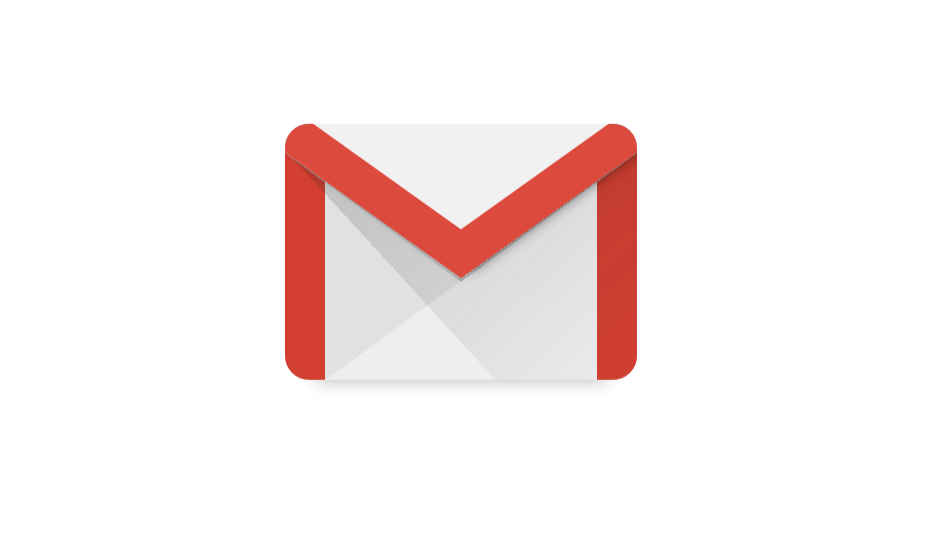 Highlights: Google will pull the plug on Inbox by Gmail today. The company says it wants to focus solely on Gmail. It will also kill the google+ service. After four years of its service, Google is now pulling the plug on Inbox by Gmail today. The move is seen as Google's mission to combine operations and focus on new services to bring greater efficiency and assistance in the app, as well as shutting down rarely used projects that failed to take off as expected. With the death of Inbox by Gmail, Google will now be focussing on development of the Gmail app on several available platforms. “Four years after launching Inbox in 2014, we've learned a lot about how to make email better and we’ve taken popular Inbox experiences and added them into Gmail to help more than a billion people get more done with their emails everyday. As we look to the future, we want to take a more focused approach that will help us bring the best email experience to everyone. As a result, we’re planning to focus solely on Gmail,” Google had said earlier. It will be a bit hard for ardent Inbox by Gmail fans to switch to Gmail, but Google says that it has brought the best features over to Gmail from Inbox. The latest Gmail app comes with features like Snooze, Connected Tasks Lists, Google Keep integration, among others that were also found in the original Inbox app launched in 2014. Last year, the company also rolled out a Smart Compose feature that uses Artificial Intelligence (AI) and Machine Learning (ML). Meanwhile, those who need time to switch to the new look and feel, can install a free Chrome extension that makes the UI of Gmail for web look a lot like Inbox did. The “Inbox Theme for Gmail” can be installed from the Chrome Web Store, and the free extension can imitate the Inbox look in the Gmail. Meanwhile, Google will also be shutting down Google+, a social media platform it created to take on Facebook. Originally, it was planned that the platform will shut down in August amid security concerns, but a bug which affected around 52.5 millions users forced the tech giant to prepone the action to April. All Google+ pages and the content from consumer Google+ accounts will be deleted today. Related Read: Google Pixel 3a, Pixel 3a XL names, specs confirmed in new leak
Highlights: Google will pull the plug on Inbox by Gmail today. The company says it wants to focus solely on Gmail. It will also kill the google+ service. After four years of its service, Google is now pulling the plug on Inbox by Gmail today. The move is seen as Google's mission to combine operations and focus on new services to bring greater efficiency and assistance in the app, as well as shutting down rarely used projects that failed to take off as expected. With the death of Inbox by Gmail, Google will now be focussing on development of the Gmail app on several available platforms. “Four years after launching Inbox in 2014, we've learned a lot about how to make email better and we’ve taken popular Inbox experiences and added them into Gmail to help more than a billion people get more done with their emails everyday. As we look to the future, we want to take a more focused approach that will help us bring the best email experience to everyone. As a result, we’re planning to focus solely on Gmail,” Google had said earlier. It will be a bit hard for ardent Inbox by Gmail fans to switch to Gmail, but Google says that it has brought the best features over to Gmail from Inbox. The latest Gmail app comes with features like Snooze, Connected Tasks Lists, Google Keep integration, among others that were also found in the original Inbox app launched in 2014. Last year, the company also rolled out a Smart Compose feature that uses Artificial Intelligence (AI) and Machine Learning (ML). Meanwhile, those who need time to switch to the new look and feel, can install a free Chrome extension that makes the UI of Gmail for web look a lot like Inbox did. The “Inbox Theme for Gmail” can be installed from the Chrome Web Store, and the free extension can imitate the Inbox look in the Gmail. Meanwhile, Google will also be shutting down Google+, a social media platform it created to take on Facebook. Originally, it was planned that the platform will shut down in August amid security concerns, but a bug which affected around 52.5 millions users forced the tech giant to prepone the action to April. All Google+ pages and the content from consumer Google+ accounts will be deleted today. Related Read: Google Pixel 3a, Pixel 3a XL names, specs confirmed in new leak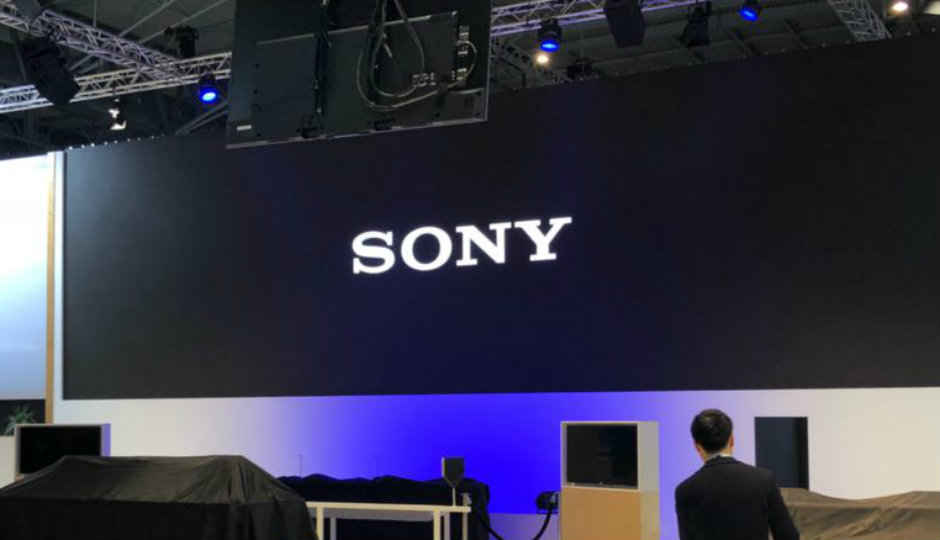 Highlights: Sony Mobiles might stop using the Xperia 1 branding from its upcoming lineup. The company is reportedly gearing up to announce a new series. The report comes soon after the announcement of Sony's Mobile division merging with the company’s other operations. Things have not been going too well for Sony Mobiles with the reported high losses and the recent announcement of the division being merged with the company’s audio, TV and camera operations. Now, it seems like the company could even drop the Xperia branding from its upcoming smartphone lineup. Sony Xperia recently tweeted that it will be moving its announcements to the @SonyMobileNews twitter handle. The announcement has sparked speculation that the company’s upcoming lineup could drop the Xperia nametag. This rumour is further fanned by a Weibo tipster, which MySmartPrice reports, has reiterated the same. As per the report, the company will soon be releasing the Camera API 2 for the Sony Xperia 1. Additionally, the device could be the company’s last Xperia offering as the Xperia 2 smartphone will reportedly lose the Xperia branding and could be launched under a different name. There have been some rumours of the upcoming smartphone, which is rumoured to be launched at IFA 2019 in Berlin. The previous reports suggest that the device could come equipped with a 6.2-inch display that has the same Cinema-wide 21:9 aspect ratio with 1234x2880 pixels resolution as its predecessor. The smartphone is tipped to be powered by the Snapdragon 855 processor and come equipped with 6GB RAM, coupled with 128GB of internal storage. Additionally, the handset is touted to come equipped with a 3000mAh battery that supports Xperia Adaptive Charging. There could be a triple rear camera setup on the device, dissimilar from the one we have seen on the Xperia 1, and the phone might ditch the 3.5mm audio jack. Rumours about the Xperia 1 being the company’s last Xperia branded device might not be too far-fetched since they follow a major reshuffle at the company. After Sony’s announcement of merging its mobile, TV, audio and camera division into Sony Electronics Products and Solutions, we recently came across a report that the device manufacturer intends to cut back half its workforce in its smartphone division, by 2020. Related Reads: Sony smartphone to cutback half its workforce by 2020: Report
Highlights: Sony Mobiles might stop using the Xperia 1 branding from its upcoming lineup. The company is reportedly gearing up to announce a new series. The report comes soon after the announcement of Sony's Mobile division merging with the company’s other operations. Things have not been going too well for Sony Mobiles with the reported high losses and the recent announcement of the division being merged with the company’s audio, TV and camera operations. Now, it seems like the company could even drop the Xperia branding from its upcoming smartphone lineup. Sony Xperia recently tweeted that it will be moving its announcements to the @SonyMobileNews twitter handle. The announcement has sparked speculation that the company’s upcoming lineup could drop the Xperia nametag. This rumour is further fanned by a Weibo tipster, which MySmartPrice reports, has reiterated the same. As per the report, the company will soon be releasing the Camera API 2 for the Sony Xperia 1. Additionally, the device could be the company’s last Xperia offering as the Xperia 2 smartphone will reportedly lose the Xperia branding and could be launched under a different name. There have been some rumours of the upcoming smartphone, which is rumoured to be launched at IFA 2019 in Berlin. The previous reports suggest that the device could come equipped with a 6.2-inch display that has the same Cinema-wide 21:9 aspect ratio with 1234x2880 pixels resolution as its predecessor. The smartphone is tipped to be powered by the Snapdragon 855 processor and come equipped with 6GB RAM, coupled with 128GB of internal storage. Additionally, the handset is touted to come equipped with a 3000mAh battery that supports Xperia Adaptive Charging. There could be a triple rear camera setup on the device, dissimilar from the one we have seen on the Xperia 1, and the phone might ditch the 3.5mm audio jack. Rumours about the Xperia 1 being the company’s last Xperia branded device might not be too far-fetched since they follow a major reshuffle at the company. After Sony’s announcement of merging its mobile, TV, audio and camera division into Sony Electronics Products and Solutions, we recently came across a report that the device manufacturer intends to cut back half its workforce in its smartphone division, by 2020. Related Reads: Sony smartphone to cutback half its workforce by 2020: Report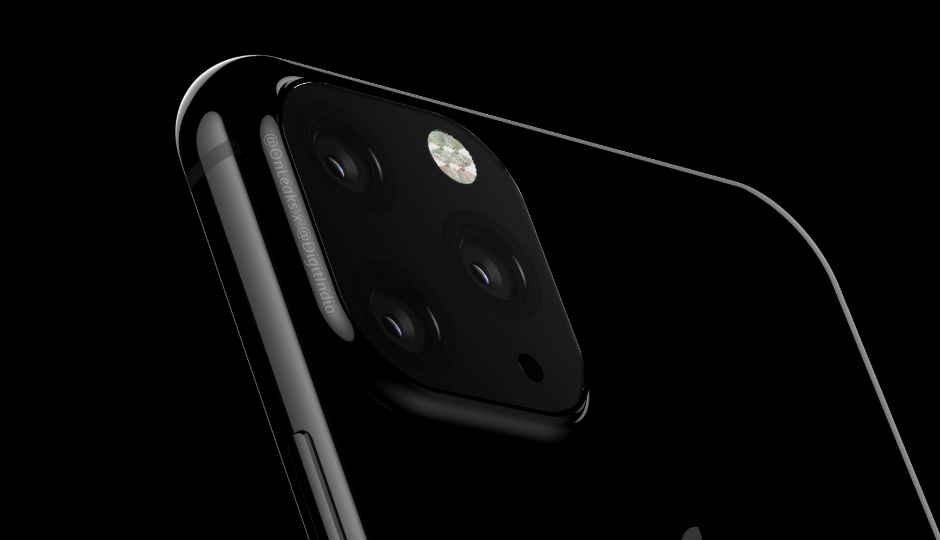 Highlights: 2019 iPhones to come with reverse wireless charging New iPhones will be able to charge each other and the new AirPods Larger batteries are also expected on the 2019 iPhones The first round of 2019 iPhone predictions from famous Apple analyst Ming-Chi Kuo came back in February, when he reported that the next iPhone flagships will feature improved Face ID, reverse wireless charging, bigger batteries and a frosted glass casing. Now, in a note sent out to investors, Kuo has reiterated the reverse wireless charging feature and large batteries on the 2019 iPhones. Reverse wireless charging on 2019 iPhones could enable them to charge the new AirPods or even other iPhones wirelessly. Any other Qi-based devices will also be supported. The large batteries, in this case, will be helpful. “We expect the new 2H19 iPhone models will support two-way wireless charging. Though the iPhone is not the first high-end smartphone to be equipped with two-way wireless charging, this new function could make it more convenient for users to charge the new AirPods and create a better integrated user experience of the iPhone and AirPods,” Kuo wrote in his note to investors. According to Kuo, Compeq is will supply Apple with the battery boards, while STMicro will supply the two-way wireless charging controller for the 2019 iPhones. The analyst had previously revealed that he expects three new iPhones to launch this year. The screen sizes of the 2019 iPhones are expected to remain the same as the 2018 lot, i.e 6.5-inch and 5.8-inch phones with OLED displays and a 6.1-inch LCD model. Kuo believes that the 6.5-inch iPhone, successor to the iPhone XS Max, could see a battery capacity increase of 10% to 15%. The 5.8-inch OLED iPhone could see a battery capacity growth of 20% to 25%. He predicts a 0 - 5% battery increase in the 6.1-inch LCD model. In his last note, Kuo also said that the 2019 LCD iPhone will be upgraded to 4GB RAM, up from 3GB on the current iPhone XR. He added that the 5.8-inch OLED iPhone model could come with Dual SIM Dual Standby. The most recent confirmation of the design of the iPhone XI came from leaked schematics of the phone, which once again confirmed Digit’s January leak. The schematics showed a square camera bump, housing the triple camera setup expected to appear on the upcoming iPhone XI (iPhone 11). This was the third such confirmation after we leaked the first-ever iPhone XI renders in partnership with OnLeaks.
Highlights: 2019 iPhones to come with reverse wireless charging New iPhones will be able to charge each other and the new AirPods Larger batteries are also expected on the 2019 iPhones The first round of 2019 iPhone predictions from famous Apple analyst Ming-Chi Kuo came back in February, when he reported that the next iPhone flagships will feature improved Face ID, reverse wireless charging, bigger batteries and a frosted glass casing. Now, in a note sent out to investors, Kuo has reiterated the reverse wireless charging feature and large batteries on the 2019 iPhones. Reverse wireless charging on 2019 iPhones could enable them to charge the new AirPods or even other iPhones wirelessly. Any other Qi-based devices will also be supported. The large batteries, in this case, will be helpful. “We expect the new 2H19 iPhone models will support two-way wireless charging. Though the iPhone is not the first high-end smartphone to be equipped with two-way wireless charging, this new function could make it more convenient for users to charge the new AirPods and create a better integrated user experience of the iPhone and AirPods,” Kuo wrote in his note to investors. According to Kuo, Compeq is will supply Apple with the battery boards, while STMicro will supply the two-way wireless charging controller for the 2019 iPhones. The analyst had previously revealed that he expects three new iPhones to launch this year. The screen sizes of the 2019 iPhones are expected to remain the same as the 2018 lot, i.e 6.5-inch and 5.8-inch phones with OLED displays and a 6.1-inch LCD model. Kuo believes that the 6.5-inch iPhone, successor to the iPhone XS Max, could see a battery capacity increase of 10% to 15%. The 5.8-inch OLED iPhone could see a battery capacity growth of 20% to 25%. He predicts a 0 - 5% battery increase in the 6.1-inch LCD model. In his last note, Kuo also said that the 2019 LCD iPhone will be upgraded to 4GB RAM, up from 3GB on the current iPhone XR. He added that the 5.8-inch OLED iPhone model could come with Dual SIM Dual Standby. The most recent confirmation of the design of the iPhone XI came from leaked schematics of the phone, which once again confirmed Digit’s January leak. The schematics showed a square camera bump, housing the triple camera setup expected to appear on the upcoming iPhone XI (iPhone 11). This was the third such confirmation after we leaked the first-ever iPhone XI renders in partnership with OnLeaks.